 Originally published August 21, 1998, in Comics Buyer’s Guide #1292
Originally published August 21, 1998, in Comics Buyer’s Guide #1292
Okay, sit back. This is going to take a couple of columns. We’ll start out relatively small, discussing the immediate lack of any sense of history, and expand into a general discussion about ageism—a belief that anything not young or recent is useless—and end with explaining why, as a result, the comic industry is in a downward spiral from which it may never recover.
But let’s make the beginning fun, at least. Fun and personal. An entertaining second-guessing game; everybody loves those. Let us begin with the magazine that has become the flagship of modern thought—emphasis on modern—for comic readers: Wizard.
In the September 1998 issue, now on sale (with three different covers, yet), the Wizard staff “picks the 25 most memorable moments in comics history.” If the article were titled “25 most memorable moments to us” or “25 most memorable moments in comics that came out since we were born,” there would be no problem. But the article purports to cover “comics history.” The Wizard staff “set about picking and choosing the 25 most memorable comics moments,” which is defined as moments that are “so vivid, so surprising, so shocking that they are forever etched in your memory.”
A laudable goal. Could be interesting. Since we’re discussing “in comics history,” that’s a lot to consider.
Except apparently—it’s not.
Because of the 25 moments selected by the Wizard staff, only two occurred before 1979.
Let me say that again:
Of the 25 most memorable moments in comics history, according to the Wizard staff, only two occurred before 1979. In case you’re interested, one of them was the death of Gwen Stacy, and the other was the death of Uncle Ben, both in Amazing Spider-Man.
To summarize this article in a way that can quickly and cleanly be considered, in order to put it into its proper perspective: Judging by the staff’s picks, we must conclude that, apparently, Jack Kirby never drew a single incredibly memorable moment in all of comics history.
Let me get something straight up front: I’m not here to rag on the Wizard staff. The problem that we’re seeing here is hardly unique to Wizard. It is both symptomatic of, and emblematic of, a staggering number of people involved in comics today. The Wizard article simply provides the convenient launching point that enables us to bring a specific problem into relief.
The question that comes to mind is the following: Were the Wizard staffers simply ignorant of material that was published before they were born (if we go on the assumption that the average age of the group is late 20s, judging by the spread of comics chosen)? Or was it that they believed that no one in their target reading group would be remotely interested in stories that were published at a time when there was a Democrat in the White House other than Bill Clinton?
Indulge me, if you will. You see, I strongly suspect that if you asked, say, the CBG staff about the most memorable moments in comics history, you would get a significantly different response. Here are some of mine, in no particular order (and I’m doing these from memory, so if I get a detail wrong here and there, cut me some slack):
1. Spider-Man lifting the machinery off himself at the climax of the Master Planner story (Amazing Spider-Man #33). One of the defining moments of Spider-Man’s history. With a needed cure for ailing Aunt May sitting only a few feet away, Spider-Man is trapped beneath a ton of unmovable debris after a battle with Doctor Octopus. Giving it everything he’s got, Spider-Man dives deeper into his personal resolve than he’s ever gone, gives himself a memorable pep talk while he’s doing it, and—in the single greatest full-page shot Steve Ditko ever drew—frees himself. From a creative standpoint, Marvel never needed to publish another issue of Spider-Man again. His story and character arc were essentially complete.
2. The first meeting between the Barry Allen Flash and the Golden Age Flash (Flash #123). With the exception of the later, and logical, meeting between the JLA and JSA, crossovers simply didn’t get better than this. The Flash, demonstrating his vibrational skills, accidentally slides himself over into the alternate world of Earth-2, home of Jay Garrick. In one stroke, DC fulfilled the wishes of the older fans who were overjoyed to see their hero back in action, acknowledged their own history rather than trying to reboot it or wish it away, intrigued the younger fans who might never have seen the Golden Age Flash and wanted to know more, and lay the groundwork for the eventual return of all the great original characters. All this with nary a multiple cover in sight.
3. The young junkie overdoses (Green Lantern/Green Arrow #86). Marvel Comics beat DC to the punch in exploring the dangers of drugs, even laudably going mano a mano with the Comics Code and dropping the CCA symbol for the issues of Amazing Spider-Man when Harry Osborn had his drug problem. But for pure stunning shock, Denny O’Neil and Neal Adams topped it. Far more graphic (and by this time, Code-approved), GL/GA depicted a scene in which a couple of druggie friends of Roy Harper (Speedy. Figures) are shooting up. To say that one of them has a bad trip is to understate it. He overdoses on panel. Adams’ full-page shot of the dead druggie, beatific expression frozen on his face, discovered dead by his pal complete with wavery shock lines radiating in all directions, was ripped right out of a nightmare.
4. The sacrifice of Al B. Harper (Silver Surfer #5). One of the recurring themes—perhaps the recurring theme—of the Stan Lee/John Buscema Surfer series was the exploration of prejudice. People hated and feared the Surfer for his alienness and outsider status, even though he had turned against Galactus and sacrificed his freedom to save the earth. It was not surprising that an educated, middle aged black man named Al Harper befriended the Surfer, since Harper knew a little something about prejudice.
A confrontation with the Stranger, however, took an unexpected turn. While the Surfer battled the Stranger, Harper discovered a bomb that would wipe out life on earth. In attempting to defuse it, he discovered the bomb was bøøbÿ trapped. Gases from the bomb essentially ate away at Harper’s skin as, wracked with agony, he kept on going. By the time the Surfer got there, the bomb was defused, the earth was saved, Al was dead—and no one would ever know of his heroic sacrifice. An incredible study of gut-wrenching tragedy and sacrifice.
A very, very close second would be the climax of Mephisto’s first appearance in issue #3 during which the Surfer almost reunites with his beloved Shalla Bal—before Mephisto, having failed to corrupt the Surfer’s soul, sends Shalla Bal hurtling back to the Surfer’s native Zenn La. The panel with the Surfer and Shalla Bal reaching towards each other, coming within inches of touching hands while affirming their love, before she disappears, comes across like something torn from a Wagnerian opera. Actually, so does the whole issue, now that I think about it.
5. Thor reveals his identity to Jane Foster (Journey into Mystery #113). The Thor series had, as its cornerstone, one of the most curious love triangles/rectangles in all of comics. Jane Foster was in love with lame (of leg, not, y’know, lame) doctor Don Blake. Blake, unbeknownst to her, was the mortal identity of the Mighty Thor. And their love was, to put it mildly, frowned upon by the only person who probably surpasses Endora as someone you wouldn’t want as your in-law, namely Thor’s dad, Odin.
Never did a relationship seem more set in stone than this one. But matters came to a head when an injured and hospitalized Jane spiraled deep into depression. She knew Blake was keeping something from her, didn’t know what it was, was convinced that he didn’t love her, and never wanted to see him again. Faced with a crossroads, Don Blake took the single most heroic action in his life that didn’t require hitting someone. “Look at me, Jane Foster… I command you to look,” he ordered. This was back when such a line would actually get the woman to look, rather than a quick retort of “Up yours.”
As he slams his cane he says, “Forgive me, father… this is the only way.” A flabbergasted Jane Foster finds herself gaping at the son of Odin who informs her, “‘Tis an immortal of Asgard whom you love, Jane Foster… and who truly loves you as well.” It’s a stunning moment, because not only has it tossed away the standard comic book girlfriend-in-ignorance convention, but you just know that Odin is gonna be reeeeeeeaally hacked off. Any kid who has ever done anything specifically forbidden by a parent, knowing that the parent is going to go ballistic, can not only relate, but be relieved that, hey, at least his dad isn’t the king of the gods.
6. The Death of Joe Chill (Batman #47). Everyone knows that Thomas and Martha Wayne were gunned down by a thief, leading to young Bruce either going nuts or becoming incredibly focused (depending what theory you subscribe to). Either way, it resulted in his becoming Batman.
But nailing the guy who killed his folks was a dangling loose end in Batman’s life—until he caught up with him in this, one of the greatest of the Golden Age Batman stories. No, the gunman wasn’t Jack Napier; it was a thug named Joe Chill. The story is notable for two incredible sequences, so much so that it’s hard to choose.
The first stunner is when Batman confronts Chill, rips off his mask, reveals his identity and makes it clear to Chill that—unlike the other occasions where he’s nailed bad guys—this time, it’s personal. As a reader, despite all reasonable assumptions to the contrary, it’s enough to make you think you’re reading the final Batman story.
But it winds up being topped by the climax as a panicked Joe Chill runs to a bunch of his gangster pals and informs them that he was responsible for the creation of Batman. Outraged over Chill’s having given birth, however inadvertently, to their greatest nemesis, they promptly deliver a barrage of .45 caliber thank-you notes. Chill goes down, and only then do these spiritual ancestors of Homer Simpson essentially say, “D’oh!” Why? Because they neglected to ask Chill who the Caped Crusader actually is. The knowledge dies with Chill—and in one respect, at least, the Waynes rest a little easier.
We’ll continue with our exploration of history, and lack of knowledge thereof, next week.
(Peter David, writer of stuff, can be written to at Second Age, Inc., PO Box 239, Bayport, NY 11705.)
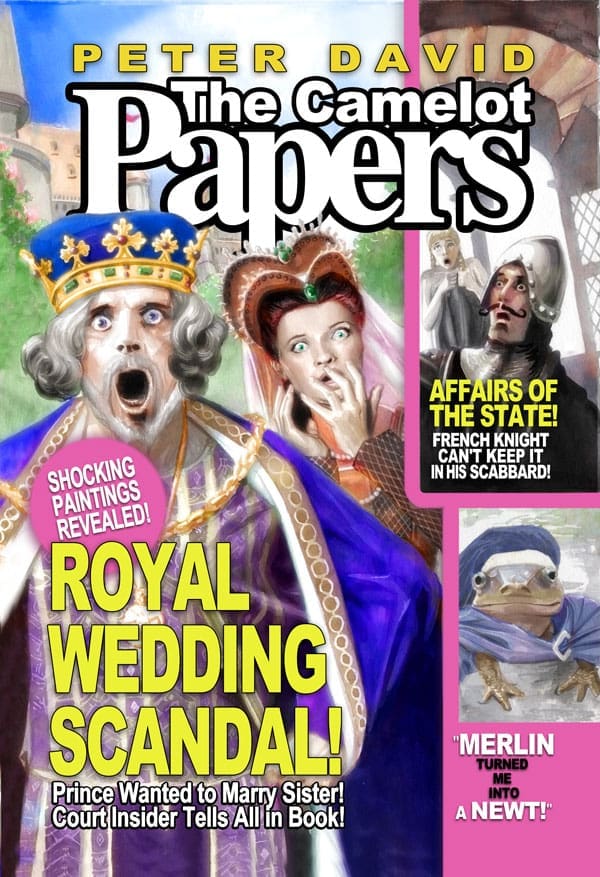
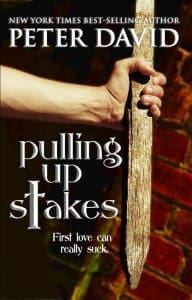
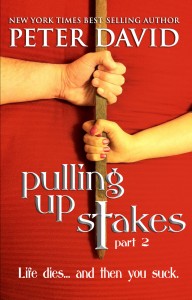
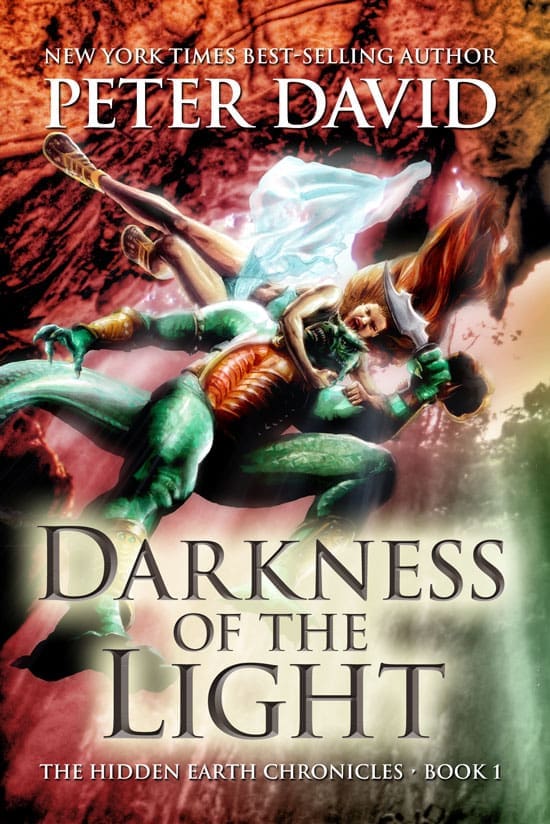
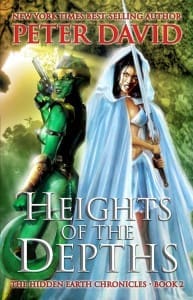
I’ll digress also:
I tried to add a post to the Four Months Later column but, for some reason, couldn’t. Maybe my fault — I have a new computer and am breaking it in, so maybe I just don’t know what I’m doing.
But, I think I have a great idea, and there’s no clutter here, so…
I vote to have Caroline teach Peter how to play the flute (or a clarinet, or an oboe, or…). Yeah, I know: In the beginning, he’ll squawk like a duck, but, as any musician can tell you, practice, practice, practice…
Of course, the inherent danger/problem of any “best of” list is that no matter how long or comprehensive it is, there’s always going to be material lots of folks feel got left off.
(The “no old stuff” seems a bit glaring, but it’s hardly new. I think one of the worst things MTV did when it played music was to have nothing older than a year ago, encouraging not just its supposed “short attention span” but also the implication that only new stuff is worth listening to.)
James: Of course, the inherent danger/problem of any “best of” list is that no matter how long or comprehensive it is, there’s always going to be material lots of folks feel got left off.
Luigi Novi: Yeah, but it doesn’t necessarily attract charges of ageism. When TV Guide does a “Best Of” list–and they do quite a few–nothing in their selections indicates that they are ignorant of television history older than the past twenty years.
Hey, remember when that guy Superman first appeared? That was sort of cool.
Personally, I’d narrow it down even further. The moment that Superman punches a wife beater pretty much defines the personality of early Superman. It wasn’t about fighting alien invasions and supervillains, it was about using his great powers to fight those who abuse their power.
I bailed from the core DCU at Flashpoint (though I do read some non-DCU titles published by DC) but I would definitely buy an ongoing Elseworlds or similar title if it featured the Golden Age Superman as he was originally portrayed, preferably in a self-contained world without other superheroes. Someone who just goes around kicking the butts of those people whose butts need kicking the most.
I remember this piece. I thought then, and I do now, that the Wizard staff’s opinions were largely informed by their personal histories as comics fans. They knew earlier moments existed, but the ones that resonated with them were the ones they read as young readers. As Maggie Thompson once put it, the real Golden Age is twelve.
“As Maggie Thompson once put it, the real Golden Age is twelve.”
No kidding. And it’s not just with comics and guys like the then-Wizard staff.
I was in a discussion thread where a guy was slagging on the movie industry over its lack of creativity compared to yesteryear and its over-reliance on sequels, adaptations and remakes. He was surprised that I guessed his age range and only missed his actual age by two years.
The reason I knew his age? He said that he personally felt that Hollywood’s golden era of creativity and originality was the 80s.
Yeah, one time a friend of mine gave me the “Hollywood is out of ideas” line. I told him that Hollywood has always been that way, it started out that way. As soon as talkies were invented stagewriters moved out from New York to adapt their plays into movies. Hollywood has always built on what they think worked in the past.
Tell me about it.
One conversation I was in on the subject made me just want to facepalm every other minute. It was seven or eight years ago. I was in my 30s and this guy was in his 20s. He had the opposite syndrome that the Wizard crew displayed though. His deal was that it was always better back in the day.
He was lamenting the fact that the Freddy VS Jason movie meant that there were essentially 11 films in the Friday the 13th franchise and 6 Elmstreet films. This, he was going on, along with the large number of adaptations in the entertainment news was an absolute sign that Hollywood was creatively bankrupt. Why, he stated, you would never see that kind of thing back in the great days of Hollywood when they were putting out original classics like The Maltese Falcon.
I pointed out three simple things that actually made him noticeably annoyed and started him acting such a fool that everyone walked away from the conversation and him for a bit. The three things were that (duh) it’s based on a book, it was a remake of a film that was only ten years old at the time, and that this was about the time that Hollywood was hitting something like the 30th Charlie Chan film.
Needless to say, he didn’t tend to start up that particular conversation again anytime that I was around.
This story reminds me of my reaction when the self-proclaimed comic book expert on “King of the Nerds”, Alana, complained about a trivia question asking when Superman was created — because she only started reading comics in the 1990s.
In fairness, “King of the Nerds” took the silly, mocking approach to the world of nerds rather than looking at what makes it so appealing to the fanbase — and, these days, to the public in general. Shameless plug: My review is at http://thearmchaircritic.blogspot.com/2013/01/king-of-nerds.html
I’m almost surprised they were going back that far to begin with. Often seems as though, nowadays, if it wasn’t this week, it’s ancient history.
I was presenting at an anime convention a few months back and saw one panel set up to discuss a “vintage anime series”. Except, that series ended all of four years back. Some ‘vintage’. I wonder what they would have made of one of my presentations where I spoke of genuinely older series dating back from twenty years to as many as fifty years?
What do you expect? The passage of ten years anymore qualifies something as nostalgia. For crying out loud, VH-1 did I Love the 90s as a remember-this-feel-the-nostalgic-glow thing in 2004.
Even better: “I Love the New Millennium” (aka “I Love the 2000s” debuted in ’08.
Whoa… Really?
I had ditched a lot of the cable package by then (and all of it a year later) and wasn’t aware of that. Ðámņ, you would have thought they would have at least waited until the end of 2010 for that one.
“vintage anime series”
http://www.youtube.com/watch?v=UDjkXkMTg-c
Great Mazinger? Yeah, that was fun. Don’t mention it in my presentation, but one of the first I bring up is UFO Robo Grendaizer (a.k.a. Goldorak in French) by the same guy and set in the same universe. Dates back to ’75 and was my intro to the anime genre. Almost recent compared to the black and white, ’63 series 8 Man, though.
I loved almost all of the giant robot shows that I could find. I became fanatically hooked on certain ones thanks to these lovely toys.
http://www.youtube.com/watch?v=SbjoI47ARUs